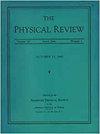Simulating lossy Gaussian boson sampling with matrix-product operators
引用次数: 5
Abstract
Gaussian boson sampling, a computational model that is widely believed to admit quantum supremacy, has already been experimentally demonstrated and is claimed to surpass the classical simulation capabilities of even the most powerful supercomputers today. However, whether the current approach limited by photon loss and noise in such experiments prescribes a scalable path to quantum advantage is an open question. To understand the effect of photon loss on the scalability of Gaussian boson sampling, we analytically derive the asymptotic operator entanglement entropy scaling, which relates to the simulation complexity. As a result, we observe that efficient tensor network simulations are likely possible under the ${N}_{\text{out}}\ensuremath{\propto}\sqrt{N}$ scaling of the number of surviving photons ${N}_{\text{out}}$ in the number of input photons $N$. We numerically verify this result using a tensor network algorithm with $\mathrm{U}(1)$ symmetry, and we overcome previous challenges due to the large local Hilbert-space dimensions in Gaussian boson sampling with hardware acceleration. Additionally, we observe that increasing the photon number through larger squeezing does not increase the entanglement entropy significantly. Finally, we numerically find the bond dimension necessary for fixed accuracy simulations, providing more direct evidence for the complexity of tensor networks.用矩阵积算子模拟有损高斯玻色子采样
高斯玻色子采样是一种被广泛认为承认量子霸权的计算模型,它已经得到了实验证明,据称甚至超过了当今最强大的超级计算机的经典模拟能力。然而,目前的方法是否受到光子损失和噪声的限制,在这样的实验中规定了一个可扩展的量子优势路径是一个悬而未决的问题。为了理解光子损耗对高斯玻色子采样可扩展性的影响,我们解析导出了与模拟复杂度相关的渐近算子纠缠熵尺度。因此,我们观察到有效的张量网络模拟在${N}_{\text{out}}\ensuremath{\propto}\sqrt{N}$存活光子数${N}_{\text{out}}$与输入光子数$N$的比例下是可能的。我们使用具有$\mathrm{U}(1)$对称性的张量网络算法在数值上验证了这一结果,并且我们克服了先前由于高斯玻色子采样中具有硬件加速的大局部希尔伯特空间维度所带来的挑战。此外,我们观察到通过更大的压缩来增加光子数并没有显著增加纠缠熵。最后,我们在数值上找到了固定精度模拟所需的键维,为张量网络的复杂性提供了更直接的证据。
本文章由计算机程序翻译,如有差异,请以英文原文为准。
求助全文
约1分钟内获得全文
求助全文

 求助内容:
求助内容: 应助结果提醒方式:
应助结果提醒方式:


